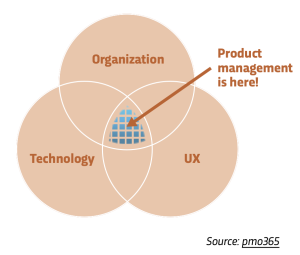It’s more than a change in terminology; it’s a change in perspective.
Project management focuses on completing a specific assignment with preset resources. It’s often centered on IT and may reference user experience (UX) and organizational priorities only when the project is assigned and handed off. That can lead to a result that doesn’t align with goals and is often difficult to scale or improve without starting over.
Product management focuses on what you want to achieve. From the design stage, teams responsible
for IT, UX and program goals work together toward a specific outcome. The process allows for continuous improvement in response to feedback and changing needs. Product management also makes it easier to use a design-centered development approach and dovetails with Agile methods, making it a valuable tool in digital transformation.

The Experience of Change
When the Department of Justice’s Civil Rights Division updated its process for reporting discrimination or a violation of rights, it worked with 18F — a technology and design consultancy within the federal government — to manage the change as a product rather than a project.
The transition challenged existing assumptions and habits. When Bill Laughman, who has worked at the division for 21 years, became Complaint Portal Administrator and Product Owner for the new process in 2019, he was skeptical. “Not having a project plan or an anticipated output or timeline was confusing and daunting,” he told 18F in a recap of the experience. Using an iterative process, the team worked in small increments and received feedback from users on each step before launching it. Laughman and his team became more comfortable with the iterative development method as new working parts reliably showed up every two weeks, he said.
What sold him on product management was its responsiveness to the overall vision of the reporting experience. When things went wrong, the group referred to the outcome they wanted to achieve, and revisions brought the process back to those goals.
“Shorter feedback cycles with the general public, intake teams, development and design teams helped us validate our progress,” Laughman said. As an added advantage, the process built trust among internal teams and improved overall morale.
This article appears in our Guide, “Unpacking Digital Transformation.” For a handy worksheet on implementing product management or to read more about how agencies are getting the most out of their modernization and transformation efforts, download the guide.





Leave a Reply
You must be logged in to post a comment.